








THE CROFT Issue 7 Kitsch
Kitsch!
23. KITSCH! BRISTOL’S QUEER FANTASIA





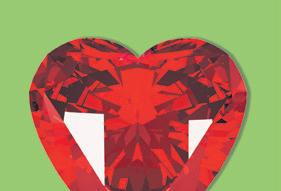
Words By Evie Baldwin
25. LIVE, LAUGH, LOVE
Words By Hannah Kent
27. FUN IS BACK IN FASHION
Words By Gabby Ellis





29. A QUEER EXCUSE FOR SEQUINED BOOTS
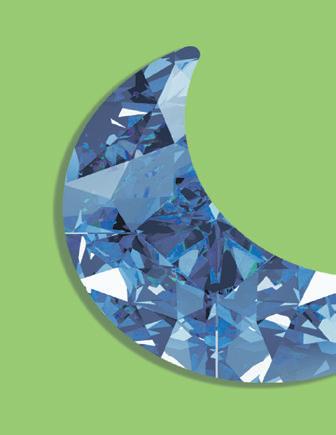




Words By Isla Nelson
3. FLAMING










Words By Wilfred Kemsley
5. AVANT-GARDE EXPLORATION

















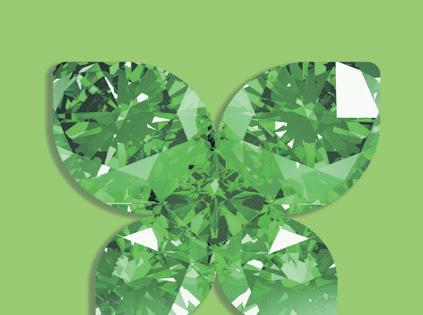



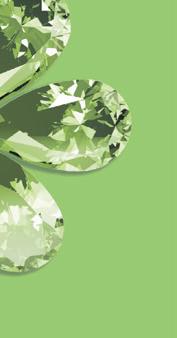
























Words By Amy Marshall
9. FILTHY UGLY










Words By Emma Whitham
15. LITTLE MISS SUNSHINE

































Words By Nicole Quy
17. UGLY SIDE OF TRAVEL
Words By Ellicia Metcalfe
Photoshoots By Emily Fromant and Anja Camenzind Broomby
Kirkland
Adam Liu
1


2
The Croft/ Anja Camenzind Broomby

3

4
STYLE.
Editor Molly Grogan
Deputy Editor Mia Flook
 Digital Editor Amy Marshall
Sub-editor Bea Buchanan-Lee
Digital Editor Amy Marshall
Sub-editor Bea Buchanan-Lee
You might know Julia ‘Uncuh Gehms’ Fox from her iconic acting features. You might also know her for her no-bullshit takes on female oppression and the pitfalls of society via her Tik Toks. But for fashion folk, she’s been on the radar for a while, especially since her relationship with rapper and fashion designer Kanye West put her bold, avant-garde outfits at the forefront of internet dialogues about high fashion, theatricality and the power of provocativeness. She is, in the words of Vogue, the moment. An It-girl of kitsch and postmodern fashion. Fox’s ensembles tend to play around with proportions and performativity, proving that fashion doesn’t always have to be functional. Skin shows where women have been told it’s unflattering to show skin. Dangerously low-cutting miniskirts and trousers tease at sexuality before their bizarre measures ensure it turns to shock. More masculine materials such as denim or leather (a nod to her previous career as a dominatrix, which she says has had a great deal of influence on her style hence her love of leather and vinyl) are manipulated, almost as if by force – against all odds –to hug, define, and augment the contours of the female body. They scantily clad hers in a completely unsexual, ungratuitous way, chiefly because we know she has had complete control over their manipulation. Her eyes are painted with a black kohl fog that stretches up to her eyebrows, creating a menacing but powerful glare, much – perhaps coincidentally – like a fox.
AVANT-GARDE VANGUARD
But her outfit choices work to do more than just provoke – they’re ultimately comments, performance art pieces, on the male gaze upon the female body, which has been, since time began, internalized and used against us in dictating our style choices. The little black dress, once a symbol of a subtle, modest kind of sophisticated sexuality, and which gained par- ticular popularity in the early twentieth century, is made gro- tesque by Fox - repulsive to male eyes. She demands to be looked at. For eyes – the gaze – to be on her. Not for pleasure, but to challenge and undo our precon- ceptions of feminine fashion. Considering that Fox had been an artist prior to her conversion to acting, showcasing her work in various New York galleries, it is no surprise how expressive, poetic, and radical her looks are. And in one of her more fa- mous Tik Toks she says, “just so you guys know, ageing is fully in. Dirty girl, ugly, not wearing clothes that fit your body type. And if I see one more product with the label ‘anti-ageing’ on the front, I’m suing. Getting old is sexy. Because being pretty and young and in your twenties is the trenches.” she goes on. She wants to see bellies over the tops of jeans, girls being able to wear whatever they want regardless of their shape or status – and without the judgment that we’ve been conditioned to tune into.
5
It’s time that women embraced the innate capacity for ugliness we’ve been taught to suppress and hide. There’s a power that resides there, and Julia Fox demonstrates the liberation in finding it.
PUSHING THE BOUNDARIESDOJA
CAT’S EXPLORATION OF AVANT-GARDE
Spring 2023 fashion week did not disappoint, particularly when it came to Haute Couture. From Iris Van Herpen’s Carte Blanche collection, which saw models flaunt designs underwater rather than walk a traditional runway, to Schiaparelli’s Inferno collec- tion inspired by Dante’s imag- ining of hell, the Avant-Garde seemed to be at the forefront of the 2023 Spring-Summer collec- tions. And yet, the first thing that comes to mind when I think of this year’s kitsch, Avant-Garde fashion week is Miss Doja Cat. Since Doja Cat’s rise to prom- inence in 2018, her name has proved unforgettable within the music industry. But in recent months, her style and influence in the fashion world have been garnering more and more at- tention – and rightfully so. Last summer saw Doja become more experimental with her look, making headlines when she shaved her head, and then her eyebrows (on an Instagram live, no less), to which she received a wave of unwarranted criticism. The backlash Doja received raised an interesting point about the re- lationship with women and exper- imenting with kitschy aesthetics. Artists are often encouraged and praised when ex- ploring their innovative, cre- ative side. And yet, when female artists reject tradition- al, conformist beauty standards, they often face criticism. Ad- dressing this in a recent interview with Dazed magazine: D oja states
PHOTOSHOOT
PHOTOGRAPHER: Emily Fromant
STYLIST: Anja Camenzind Broomy

DESIGNER: Polly @2point5d
‘[The media is] like, “Oh, this can’t possibly be her having fun. She has to be out of her mind. She has to be cuckoo’. ‘Now, to me, beauty is going against it. I love when you take something that is maybe classically beautiful and twist it and make it your own’.
7
6
Doja has always been experimental with her style, a notion which was showcased at this year’s Paris fashion week. Despite being only an attendee, Doja was one of the most memorable people from the major SS23 fashion shows, clad in Avant-garde attire. Perhaps her most daring look to date, Doja attended the 2023 Schiaparelli Haute Couture show at Paris fashion week embellished in 30,000 red Swarovski crystals. It’s rare to find dedication to the Avant-garde as great as Doja’s. Teaming up with legendary makeup artist Pat McGrath and creative designer of Schiaparelli, Daniel Roseberry, her look took almost five hours to complete, with the team individually applying each crystal until Doja was almost unrecognisable.
But as when she shaved her hair, experimentalism doesn’t come without criticism. Many praised Doja for choosing to step outside of the box of traditionally ‘pretty’ fashion looks when others such as Kylie Jenner also wore Schiaparelli but in the form of a floor-length gown. Others, however, weren’t so positive. Despite working with a world-renowned makeup artist, an influx of comments on social media critiqued Doja for not wearing lashes with her look. But in true Doja Cat style, turned the demand for lashes on its head – quite literally. Responding to the comments in an ambiguous Instagram story,
Doja wrote ‘If lashes are what you all want, then lashes are what you’ll get’. She attended the Viktor & Rolf show two days later, doing a complete 180 on her previous look, wearing a brown pinstripe suit with an overexaggerated silhouette and a ruffle-collar shirt. Most notable, though, was Doja’s eyelashes. Playing on the critiques she received, Doja wore false lashes on her forehead, chin and upper lip, imitating eyebrows, a moustache, and goatee. Through her approach to fashion, albeit unconventional, Doja has certainly established herself as a contender for the next celebrity icon of Avant-garde. Always experimental and daring to reject traditional beauty standards, Doja’s commitment to pushing the boundaries will continue to be celebrated by the fashion world for years to come.
Words By Amy Marshall
PHOTOSHOOT
PHOTOGRAPHER: Emily Fromant
STYLIST: Anja Camenzind Broomy
DESIGNER: Polly @2point5d
MODELS: Rosa Picard & Izzy Higgins

7
STYLE.
Editor: Molly Grogan
Deputy Editor: Mia Flook
Digital Editor: Amy Marshall
Subeditor: Bea Buchanan-Lee


PHOTOSHOOT
PHOTOGRAPHER: Emily Fromant
STYLIST: Anja Camenzind Broomy
DESIGNER: Polly @2point5d

MODELS: Rosa Picard & Izzy Higgins


9
Now to me, beauty is going against itCATDOJA
8
Editor: Saiba Haque
Deputy Editor: Maya Glantz







Digital Editor: Emma Witham


Filthy Gorgeous
I’ve never been a hugely inventive cook. I don’t enjoy throwing everything I have left in my fridge all-together - rather unlike my partner, evidenced in his recent creation of a dish that mixed both sauerkraut and lentils. He’ll play with any forceful flavours he can get his hands on, while I generally just stick to the flavour pairings I know and love. But I’ll always adopt someone’s recipe and make it my own, bringing it from gorgeously complex to downright cheap and easy. And I have no shame behind that either.
I’ve made potato salads where I’ve swapped boiled potatoes to canned ones, and I’ll stick frozen veg in a stir-fry any day. There should be no shame around long-life ingredients – on a low and solitary budget, it’s good to have staples that won’t go off as quickly as fresh will and it saves you lots of time during tired evenings. Can-filled cupboards certainly aren’t as eye-catching as the veggie cornucopia of a fridge, yet I can’t help but love it. Bring on the frozen spinach!

One of my favourite recipes is about as far away from aesthetically pleasing as you can get, a staple dish of mine that will always make others question my tastebuds. It’s a recipe I learnt from my mum; a recipe written in my notes app dating from before I even started University. It’s essentially a Spaghetti Bolognese, but it’s made with canned tuna instead of beef mince. I’ve never used a fresh tuna steak in it – I wouldn’t know the first thing about how!

Yet I’ve managed to alter it to all sorts of tastes and dietary requirements, swapping the tuna for courgette and removing the non-veggie ingredients. It’s easy, adaptable and filling, and can be batch made and saved in containers for future easy dinners - even mixed with rice, peas and broccoli to make a dish playfully known as Tuna Mice in my household. I’d recommend the Bolognese with a side salad, made of rocket, lambs lettuce and beetroot leaves, drizzled with balsamic vinegar.
Words By Emma Witham


FOOD.
9
The Croft/ Saiba Haque
Ingredients (Makes 3 servings):
400g chopped tomatoes – canned or fresh
3 portions spaghetti
1 large red onion



½ tbsp sugar







Pinch of salt
Pinch of ground black pepper

1 tbsp tomato puree

3 splashes Worcester sauce
15ml red wine – or more if you like it a bit more boozy


1 splash balsamic vinegar
1 vegetable stock cube
1 carrot

2 cloves of garlic
1-2 cans of tuna steak according to preference
Mixed herbs - preferably a mix of thyme, rosemary, sage, basil and oregano, fresh or readily prepared (supermarkets often do their own brand)
A couple splashes of olive oil
...In The Kitchen
Method:





1. Heat the olive oil in a large saucepan, over a medium to high heat.
2. Dice the red onion and garlic cloves as coarsely as you like, and then add to the saucepan once hot, and fry off until they soften and some colour is lost from the onion.
3. Grate the carrot as finely as possible and put to one side.

4. Add the tomatoes and stir at high heat, then simmer for around 3 minutes.
5. Turn the heat down to between medium and low heat, and add the rest of the ingredients, including the carrot. There’s no need to make stock with the stock cube – quite literally just add it in.
6. Cover partially and let simmer over a low heat for around 40 minutes, giving the occasional stir.
7. About 15 minutes before the Bolognese is ready, heat the kettle and pour the hot water into a saucepan, ready to be salted and add the spaghetti.
8. Strain the spaghetti once cooked, and take the Bolognese off the heat once reduced slightly.
9. Plate up and enjoy with optional salad alongside.
Adapting this recipe is easy enough too, so do play with it. I like experimenting with bell peppers and courgette, but you might want to stick a whole head of broccoli in there. The point of this filthy yet gorgeous recipe is really the fun of it. Get weird and enjoy!
10
Editor: Saiba Haque
Deputy Editor: Maya Glantz

Digital Editor: Emma Witham

FOOD.
11 The
Saiba
Croft/
Haque





12
WELLBEING.
Editor: Sophia Smith

Deputy Editor: Ursula Glendinning

Digital Editor: Helen March
Sub-editor: Zara Whistler

13
The Croft/ Kirkland








14

15
Deputy Editor Name name
Last summer I told my Dad, ‘I don’t think I could ever feel miserable again, I’m just too in love with being alive.’ I meant it, and my recently inked inner arm dawning, a ‘happy to be here’ banner, was certainly a testament to that. Having emerged from my teenage years, characterised by frequent depressive episodes and eating disorders, I moved into my 20s in the best state of health I had ever been in. After studying abroad, I returned to the country with reams of energy, memories and new friends, and the most genuine love I could have ever imagined. I was assured of the fact that nothing could bring me down.
And most of this has held true.
Over the past few years, I’ve come to cherish the simplest things in life: live music, nourishing food, dinners with friends, sunsets, sunrises, birds, dogs, cats, snails. There truly is so much to love. Regardless of what comes my way, I’ve found it hard not to remain optimistic, or at the very least appreciative, about what’s here for me.
It’s this optimistic outlook which has given me the reputation of being the ‘happy’ friend, and I will admit that, for the longest time, I took it in my stride that this was the perception people had of me. It felt like a win for the younger me who couldn’t seem to dissociate herself from her anxiety, depression, and general ‘sad girl’ vibe.
In truth, I am generally a happy person. However, thinking I was immune to both the regular emotional and hormonal fluctuations every human being experiences, and the physical toll that excessive stress can take on both the mind and body was silly. And I fear that, in making everyone else believe that this was the case too, I only exacerbated an issue that would otherwise never exist.
Indeed, being the ‘always happy’ friend comes with a downside - the identity crisis when in a period of not feeling so good. Truly it’s a self fulfilling cycle of doubting authenticity. Am I really content with life if I’m sad right now? What will people think if I’m not content after I’ve preached about so much love for life ? Does this mean that they’ll also start to doubt this ethos? Do I pretend that I’m doing perfectly fine just to prevent this? No. The truth is, you don’t have to always be in love with life to want to keep living it. Likewise, you don’t have to always add resolute joy to your friends’ lives to be a good friend.
When the most extreme workload coincided with the bitterest winter during a period in which .we were unable to put the heating on, I hardly had the energy to dance down the street every day like I had done all summer. And when I had pulled my 5th allnighter in 2 weeks, I hardly had the enthusiasm to make plans.
It felt like I was doing not only myself, but my friends an injustice, which, in turn, made me feel a lot worse about my ‘lower’ period. “This is so out of character. She’s never been like this?” Of course she had. And of course she always will, at some points. That doesn’t mean she’s just not as in love with all those little things, she is still so happy to be here, she’s just waiting for a time when she actually has the physical space to treasure such things.


To anyone who has fallen too deep into this archetype, I want to emphasise that your worthiness is not dictated by your mood, outlook energy or level of serotonin. You don’t owe anyone unwavering idealism, but you do owe yourself the capacity to feel all feelings, good or bad, optimistic or pessimistic, without an interrogation of your authenticity, progress or identity. You don’t have to be anyone’s rock, pick me-up, or guaranteed source of happiness. It’s great to be in love with the little things, a people person, easy to impress. It’s great to have friends who appreciate your energy. But you’re also not a character. You exist outside this singular aspect of your personality. When my ex called me a ray of sunshine whilst we were breaking up, it infuriated me. This was a boy who had neglected all my painful, genuine, emotions, and couldn’t seem to handle it once he realised that I was a human being with actual desires and not a gimmicky stock character who only existed to be sweet, smiling and subservient. Am I fuck your ray of sunshine. Your validity to be cherished, understood and appreciated doesn’t change when you can’t, for however long, bring light into someone’s life.
I’m saying all of this truly on-brand. For it is very likely that, despite my anxieties, none of my friends have ever actually worried about my perceived lost spark as much as I have worried about them worrying. This whole journey, which can be summarised, woefully accurately, by my genuine discovery of the cliche, “its ok not to be ok”, has forced me to confront my own toxic positivity. Always on hand to make people feel better, and preach optimism, I’ve been prioritising making myself feel better, and that’s by letting myself feel worse for a little while.
The Croft/ Kirkland
TRAVEL.
Editor: Finnuala Brett
Deputy Editor: Grace Burton

Digital Editor: Isobel Edmonson
Subeditor: Eve Baird
The Croft / Finnuala Brett
17
THE UGLY SIDE OF TRAVEL
Tavelling does not always go to plan. It’s 5 pm on a minibus on the side of one of the world’s most dangerous roads in Peru. The bus is steadily filling with mosquitoes and the passengers are becoming more and more frustrated. By now we were supposed to be exploring the city of Cusco. Instead, we are rationing the last packet of crisps between us and trying to prevent our legs from cramping up.
Travelling can be an incredible and life-changing experience, but there is also an ugly side in which lots of things go wrong. This side is rarely shown in the social media feeds of friends and famous travel influencers, which can trick us into thinking that it doesn’t exist. This only serves to make things even more stressful and isolating when things do go wrong - as they inevitably will.
“It is how you deal with this ugly side of travel that can de ne your overall experience, and determine whether you come away satis ed or with regrets.”
Back to the minibus. The day before, my friend and I had an incredible time exploring Macchu Pichu in Peru. However, that evening, we received a notification that, due to worker’s strikes, our train the next day was cancelled, as were the trains for the following three days. Macchu Pichu town is only accessible by train. Our flight home was in two days. We were stranded.
The ugly side of travel had reared its head, and we struggled with the stress of trying to decide what to do next. Luckily, we found a tour company that drove minibuses to Cusco from the next town over. It meant a 3-hour hike along the railway line to said town with a suitcase, but we were grateful for an out. What followed was a very uncomfortable 7-hour drive through terrifying roads whilst being eaten alive by mosquitoes and not having any mobile data. Nonetheless, we arrived in one piece in Cusco and were able to catch our flight the next day.
The stress of things not going to plan - be it a missed flight, an overrated restaurant or dodgy accomdoation - can be extremely difficult to dealwith. But the lessons you can learn from your mistakes and overcoming such stress are invaluable. Understanding
that you have the capacity within yourself to deal with disruptions helps you to become more confident both in travelling and in life. To draw upon one of the most clichéd clichés out there, what doesn’t kill you really does make you stronger. After having to navigate my way out of the Peruvian jungle, the prospect of calling the dentist to book an appointment seems much less daunting. One of the worst days of my time in Peru is in fact the day I am most proud of.
“The ability to adapt when things don’t go to plan is also invaluable in travel and in life.”
When travelling, adapting can lead you to experiences you never would have had and people you never would have met. The ability to adapt is also necessary in a world that changes so fast, and can help you grow alongside, rather than in spite of, the changing circumstances in modern daily life.
It is also important to maintain perspective and gratitude when dealing with things going wrong when travelling, as difficult as that can be. In Peru, the reason why my trains had been cancelled was due to a worker’s strike. These workers faced terrible working conditions and a cost of living crisis and were struggling for daily survival. The inconvenience I felt is incomparable with their struggle. It helped to remember that when the stress of the situation began to feel overwhelming. It reminded me of the sheer privilege I possessed to be travelling and experiencing an amazing country, and the privilege to then also have the resources to leave it and leave behind the struggles felt within.
The ugly side of travel can’t be denied. It will inevitably be felt. I felt it as I hiked with aching muscles, battling sweat and bugs through the jungle in Peru towards a minibus whose existence I could not guarantee. The bottom line, however, is that it is okay for things to go wrong, both in travel and in life - in fact, we should expect it. What matters is how we react to things going wrong, and whether we treat them as punishments or as lessons. We shouldn’t lament a change of plans because they can be a lesson to learn from and, for all we know, could lead to an even better path.
WORDS BY ELLICIA METCALFE
18
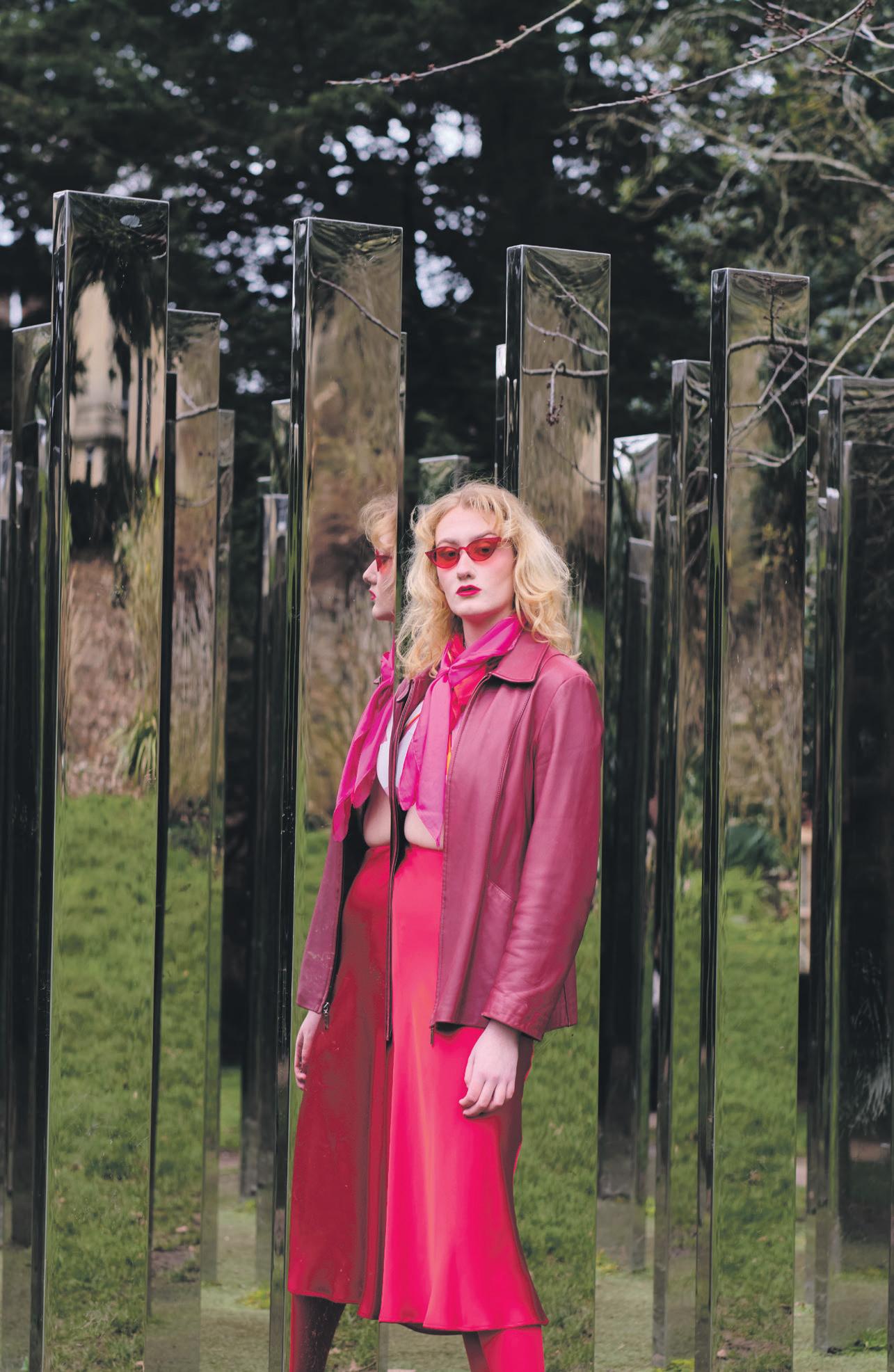
19
The Croft / Adam Liu
TRAVEL.
Editor: Finnuala Brett
Deputy Editor: Grace Burton

Digital Editor: Isobel Edmonson

Subeditor: Eve Baird
The Croft / Adam Liu
20

21
Photography by Orin Holmes
U T O P I A
EDITOR'S NOTE:

The world of fashion is scary. Well, it seems that way when the fashion girlies are known for Vinted beef and fighting over ‘baby-tees’ in the children’s section of the charity shop. But it’s not all afghan coats and BDG cargos. We want to change this rep, and what better way than to do it through the world of kitsch? Kitsch bridges the gap between the beautiful and the ugly, the satirical and the serious, the outdated and the avant-garde. It stands for everything that fashion should be; inclusive, accessible and just plain silly.
The performance of Kitsch is subversive, critiquing the role of mainstream society as it turns the tasteless into the fabulous. It’s transformative nature knows no better friend than sustainable fashion. Reworking the very foundations of the industry, both kitsch and sustainability look to repurpose the outdated in order to birth something new. At it’s core, we have come to realise that kitsch is, most importantly, fuelled by irony. So, in it’s true spirit, we have curated a list of random (and objectively stupid) things that we have decided are kitsch, and un-kitsch:
Kitsch:
Sylvanian Families, Vajazzles, Ursula, Knitted Cardigans, Gummy Bear Earrings, Scrub Daddies, Kilts, American Candy Store Paraphernalia, 5 Minute crafts, Zoella, Beliebers, Henry Hoovers, Random Acts of Kindness
Not Kitsch: Gravity Nightclub, Nandos, Gift Cards, Instagram Reels, Jelly Cats, The National Gallery, UO Corset Tops, Nike Socks, Uno, Redbull, Hailey Bieber, Skinny Scarves
Lots of love, The Utopia Team xox
22
KITSCH ! Bristol's Queer Fantasia
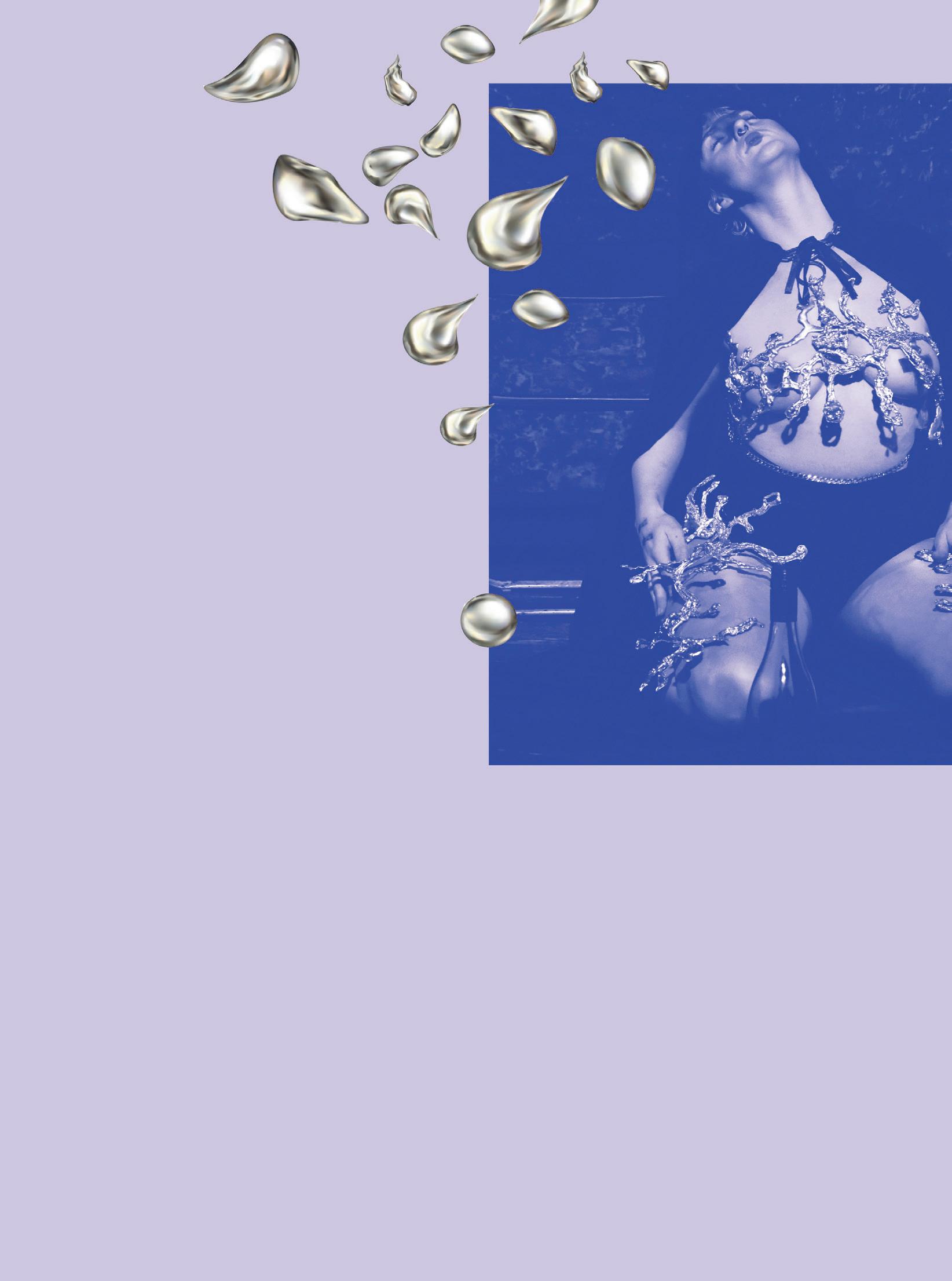
Before the other night, my relationship with ‘kitsch’ as a concept was practically non-existent- I believed the word ‘kitsch’ to be just that, a word. In my mind, it held the same cultural relevance as words like ‘fetch’ or ‘cheugy’, adopted only in the last few years and thrown around merely to express a nuanced approval or disapproval of someone’s style. Little did I know, ‘kitsch’ was yet to reveal itself to me as the platform for so much more. After their debut event in December, Kitsch! events, founded by @lottiemellor, returned to the Loco Klub in full force on the 24th of February for a queer celebration of ‘villainous glamour.’ Inviting the excess, cliché, and extravagant, this night of Kitsch challenged mainstream cultural tropes of the ugly and evil, redefining these queer-coded stereotypes into cyphers of beauty and liberation.
Walking into the venue was like entering a scene from a distorted children’s fantasy book, with the décor, lighting, and camp performances working together to mimic that of Disney’s original fantasia. After making my way through a sea of glamorous makeup and gaudy accessories, I joined the crowd to indulge in the drag and cabaret. Honestly, I’m not well-versed in the Bristol drag scene- my only drag experience being last year’s Pride and the few times I’ve ever stepped foot into OMG (the UK’s objectively straightest gay club in the history of gay clubs). To quote my friend Gabby, my eyes, quite literally, ‘lit up like a kid in a candy store.’ What excited me most was the beautiful and collective demand for absolute fuckery. Whether it was @Boohooman’s Beyonce mashup performed whilst dressed head to toe like a purple vampire, or @Smallwillynelson’s seductive cowboy debauchery to Taylor swift, the crowd was screaming along in awe. Tapping into the extreme aesthetics within kitsch, @WhosVelvetWilde utilises the horror genre within their performance to carve out a space for themselves within the world of theatre. Using their platform to explore intersections between ethnicity, queerness, and religious belief, they aimed to demonstrate that ‘there is no right way to be queer’.
Throughout the night, the camp performances were split up by an explosive fiesta of activities and crowd interaction, from runway competitions to little snippets into queer ballroom culture.
From the ruins of white supremacist ideologies woven into the queer timeline, Bristol’s ballroom community embodied everything bold and vivacious in their catwalk. In the true spirit of kitsch, they created an atmosphere of anticipation and excitement, fuelling a genuine exchange of passion between strangers.
The aesthetics of maximalism were ever present throughout the event, especially in the @Gender_Criminal’s performance, where a vibrant Beauty and the Beast musical number rolled on into a colourful and outward celebration of trans bodies. This celebration of queerness and diversity extended into the general crowd, where gender binaries no longer existed and personal expression through fashion and makeup had no limits. @Cute. Cartel, a queer collective with the aim to prevent abuse and support those affected by trauma, adopted a simultaneously punk and hyper-feminine aesthetic with their baby pink crochet balaclavas. The dance floor was a realisation of everything I wanted my old dress-up box to eventually become; one moment I was talking to Grease Lightning and the next, the fairy godmother from Shrek. Kitsch!’s zero-tolerance policy clearly facilitated a real desire to connect with others. As Isabelle told me, ‘I’ve made friends without even trying to.
"there is no right way to be queer"
23
Queer
With these boundaries in place, I experienced a real openness within the community that permitted constructive and particularly eye-opening conversations. Robin and Lou both stressed to me the importance of queer spaces. For them, Kitsch! provided an opportunity to embrace all the elements of campness and femininity that they are taught to suppress, even within the gay community. Within such a warm and welcoming conversation, Robin and Lou helped me better understand my ignorance. They highlighted the importance of my everyday language in its ability to shape my understanding of the world and, ultimately, internally reject the gender binary. It became clear to me that ‘kitsch’ doesn’t merely refer to a particular style of clothing, object, or work of art. It is, as Lou put it, a ‘liberation through one’s pure self’.
Offering an escape from the discontent of the ordinary adult world, Kitsch! encouraged the return of an innate, childlike desire for creation. The theme of nostalgia trickled throughout the space, and into the pop-up exhibition. Containing everything from religious confessionals to barbies and plastic teapots, the show playfully combined the absurd and uncanny. One installation enticed me to sit down at what seemed like a warped re-imagination of an 8-year-old’s afternoon tea. Sat on an armchair draped in crochet that may well have been taken straight from my grandma’s living room, I was immersed in a distorted recreation of my childhood growing up in the early 2000s. @Eyewangeye’s sculpture, which I could only think to describe as a yassified toilet seat, quite literally turned the shitty into the swanky. A true embodiment of kitsch, it captured the essence of primary school arts and crafts.
Reinforcing a clear bridge between the grassroots and the avant-garde, the exhibition displayed Kitsch!’s aim to support and uplift an entire community. This extends way beyond the platform that they provide local creatives. After raising £1000 for the LGBTQ+ youth homeless charity AKT and Bristol Drugs Project at their debut event, this night of villainous glamour put 25% of profits aside in support of S.W.A.R.M (Sex Worker Advocacy and Resistance Movement). Not only was this night celebratory of ‘kitsch’ on a personal level, but it is also helping to realise physical change on a larger scale.
Kitsch! released the constraints on my inner child. Immersed in a pool of freedom and creativity, I felt inspired to translate this concept of kitsch into my day-to-day. Why should I hold back when less isn’t necessarily always more? I’m making a promise to myself; to dress with a little more silliness, dance with a little more energy, and argue with a little more force.
BRISTOL FASHION FORWARD SOCIETY’S UTOPIA
 Wriiten by Evie Baldwin
Edited by Gabby Ellis
Photographs by Ayesha Nawaz
Wriiten by Evie Baldwin
Edited by Gabby Ellis
Photographs by Ayesha Nawaz
"Liberation through one's pure self"
24
A 70s lava lamp. An A1 pop art print of Marilyn Monroe. Princess Diana memorabilia. A transparent inflatable lounge chair. Retro geometric wallpaper. Three flying ceramic wall ducks. What do all of these things have in common? If you were to say they’re all tasteless ways to decorate the home, you could be both right and wrong - but the word we’re looking for here is ‘Kitsch’. Kitsch (derogatory) describes a kind of gaudy style of eyesore interiors decorated with a disharmony of common decor pieces; kitsch (complementary) is everything of the former, but takes it on knowingly and with a sense of pride. The kitsch style has been around for a while, and it’s certainly here to stay.
Somewhere in a 19th century art market in Munich, ‘kitsch’ was first used to describe it’s cheap and marketable art. It was familiar, accessible, particularly sentimental, and the kind of thing that new wave modernists loathed. With new art movements of the 20th century on the rise, the escapist fantasy of styles like baroque and art nouveau was out. To create something truly avant garde was to challenge the fanciful and over consumed style of the past, something which set modernism on its path to become the ultimate buzzkill of the twentieth century. Buzzkill-in-chief Clement Greenberg brought up kitsch in his essay ‘the Avant-Garde and Kitsch’ to critique ‘popular, commercial art’ such as ‘comics, Tin Pan Alley music, tap dancing, Hollywood movies’. Greenberg would be horrified if he were to watch the WAP music video, Riverdale or practically any Marvel movie. Despite his very valid plea for more meaningful art his use of ‘kitsch’ (derogatory) fails to consider how much we really need these common comforts.
When preemptive kitsch made its debut in the home, the deliberate use of objectively outdated styles offered a refreshing means of self expression. The subgenre ‘Kitsch lumpen’, began mainly as a way for those living in poverty to have access to interior design in the first place. Those who dreamt of designer armchairs and expensive art prints instead had to improvise with phone booths, graffiti, and road signs, (anyone who’s lived in first year uni accommodation will be happy to know they’ve taken part in a radical style movement.)
Facing hardship, with nothing but hand-me-down furniture, some paint and a touch of kleptomania, people were able to modernise old home items to create a space that was truly their own. It was a radical way to challenge the extravagant decor of upper class home interiors and bring colour and style into the home with very few means. Poking fun at the aesthetics of the ultra wealthy proved to be so fun, that pseudo-luxury kitsch emerged as another subgenre. This was ironically a less accessible aesthetic taken on by designers. Through consistency and perfect disharmony, eccentric decor was able to exist without boundaries- and without judgement (see also: designer kitsch and pseudosperic kitsch).
An antique chandelier in an 18th century country house means money, but a chandelier light fixture bought from Homebase is tacky; an Andy Warhol original is to be marvelled at, but a pop art Marilyn Monroe poster means nothing nowadays. Taste can’t be bought, but it also can if you hire a very good interior designer. We often speak of ‘high’ and ‘low’ culture as the hierarchy of art. Kitsch (derogatory) can be a condemnation of your very way of life when it comes to how you express yourself. ‘Taste’ itself becomes synonymous with class, and if you can cultivate value from the small telltale signs of high culture then your home becomes a set piece for the place in society you desire to be. Judging class means judging character, and embracing kitsch works in direct opposition to this by lovingly embracing what snotty insular circles have tried hard to distance themselves from. Kitsch rejects these classist and imposing ideals and, especially within the domestic space, does it on the most personal level. The home symbolically reflects our lifestyle, whilst the rich can litter their homes with the grand and the unusual, the familiar and the misunderstood tells a bold and unapologetic story. A quick look at Architectural Digestproves that many are trying to make their homes as stylistically modern as possible without actually saying much - kitsch has become more avant-garde than avant-garde itself.
Everything Right With ‘Live, Laugh, Love’
Kim Kardashian, for instance, hired minimalist designer Axel Vervoordt to design her home. The key characteristics of his design were neutrals, simplicity and consistency. It’s a kind of consistency that even extends to her kids’ playroom, which had many confused as to why she’d want her children growing up believing they’re surviving in a bleak and colourless Dune-esque dystopia. Perhaps many celebrities prefer neutrality because it’s so easy to avoid criticisms of taste if your taste is really nothing at all. Kitsch is a pushback against this crisis of identity. The home is a place of nostalgia and warmth, something designers often forget. Kitsch is open-minded, it doesn’t want to be taken seriously. It’s a shame that the Kardashian kids will grow up to associate their childhood bedroom with the inside of a milk carton instead of dream catchers, glow in the dark stickers, and Cath Kidston pillows.

Those clinical homes of the sanitised stark white variety seem to be an unfortunate side effect of the corporate world. There’s a growing detachment between identity and the home,which comes from an increasingly capitalistic culture. As Kim K said, defending her milk carton of a home, consistent minimalism is needed to contrast with the ‘chaos’ of the working world. The stress of work can deter us from doing too much with our homes, but this detachment erases what is important about where we live. Hustle culture has clearly eroded our desire for leisure time, and a little silliness in the form of some kitsch ornaments might be all we need to remind us.
The tides are turning against this mindset. Thrifting is on the rise, with more people expressing themselves through second hand items. We’re giving homes to our parents and grandparents old vintage pieces, repurposing miscellaneous items to build up a new kind of interior style and embracing the ironic and antithetical. ‘Live love laugh’ might be the slogan of a generation of middle class mums lacking in self awareness, but even that is on its way to becoming a kitsch decor classic. There have been many interior design micro trends that have proven to be a sustainability nightmare, especially considering how domestic items are meant to be even more long lasting than clothes. There’s a big dilemma when it comes to self expression within the home, but eclectic and individualistic styles like cluttercore and maximalism have centred kitsch as a way to recycle lost and forgotten home pieces. On TikTok people are sharing the weird and wonderful decor pieces they’ve found in flea markets and charity shops. There have been auctions for ‘vintage’ Ikea and a rising interest in Cath Kidston classics, and artists like Naomi Anderson-Subryan and homeware designers like Helle Mardahl Studio have taken on elements of kitsch. Once mass produced and unspectacular home items are being released back into the wild to find a new life.
With custom carpets being made of anything from Pokemon to playing cards, and bizarre little novelty lamps finding their way out of the depths of vintage stores, there are more ways than ever to incorporate kitsch into the home. In the same way that cyclical trends are repurposed to create new styles in fashion, we should be finding more ways to express ourselves in our own spaces by embracing all that is kitsch. Fun is back in fashion.
FASHION FORWARD’S UTOPIA
Written by Hannah Kent
Edited by Evie Baldwin
Collage by Evie Baldwin
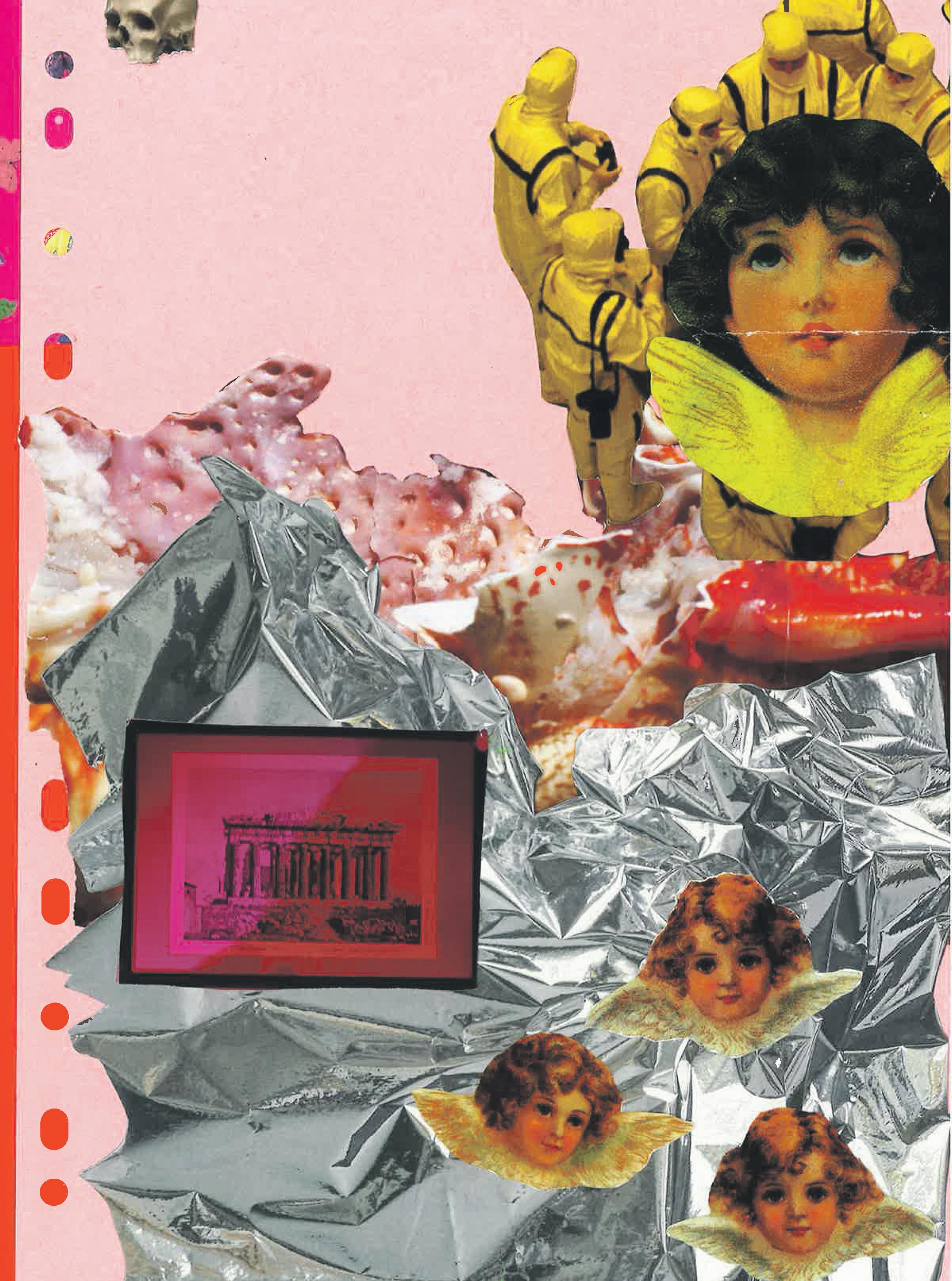
26
IS BACK IN FASHION
Like it or hate it, kitsch is here to stay. With everyday objects masquerading as accessories and the inevitable return of Y2K slogan tees, capitalising off of ‘cheap’ or ‘cheesy’ is on the rise. Kitsch has been defined as garish, offensive and cheap, often directly ridiculing the inaccessibility of high art or fashion. Think Jeff Koons’ Orange Dog, mismatched patterns, and cliché souvenirs. Whilst the style has historically been confined to the domestic space, kitsch jumped into the world of fashion under the disguise of an accessory. In our generation obsessed with social media, irony and satire, it’s taking on a whole new persona under ‘dopamine dressing’.

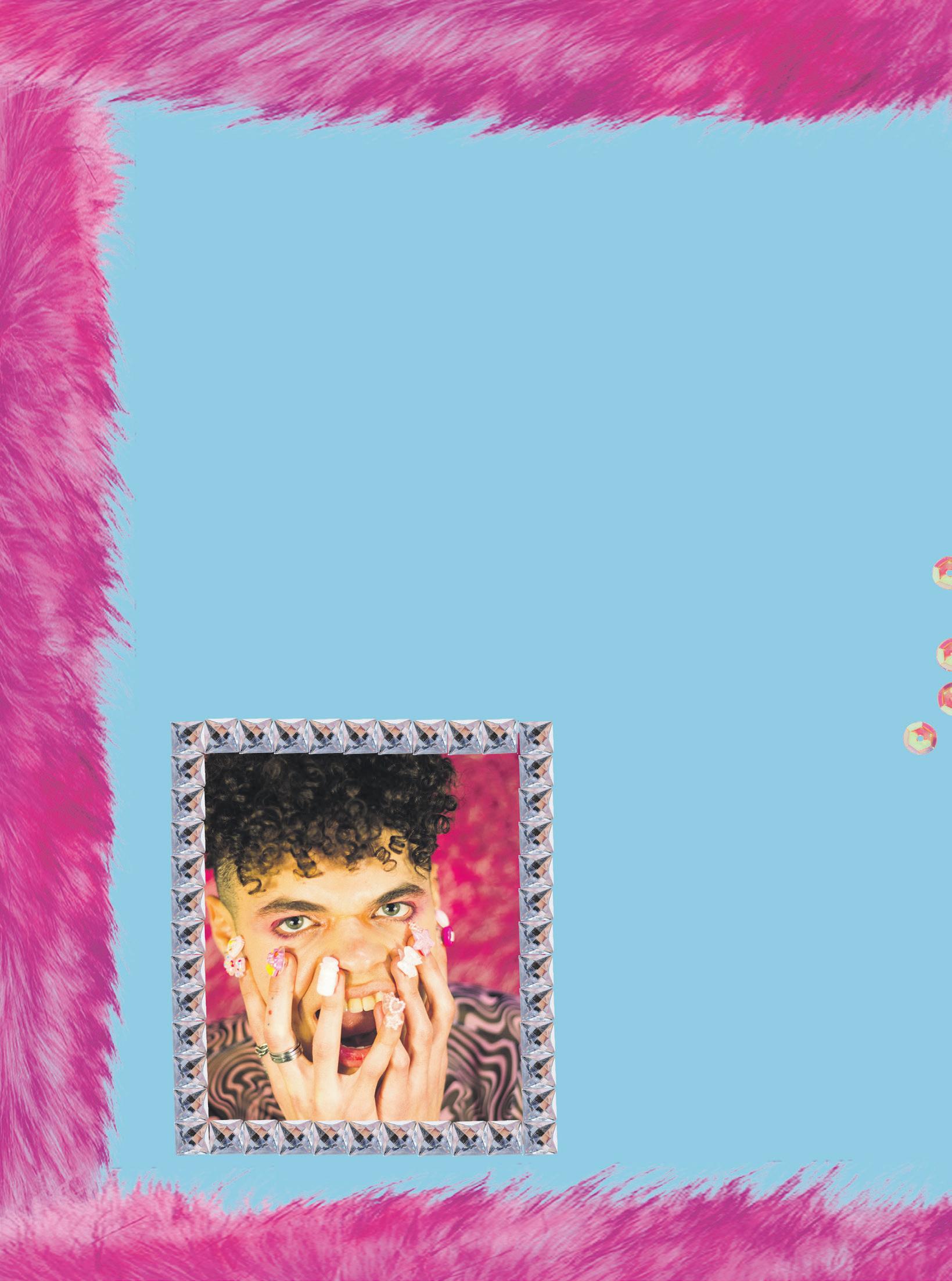
Think of La Manso. In one fell swoop, la Manson and their viral acrylic rings had most of us wearing chunky, ostentatious plastic on our fingers for the best part of two years. Whilst their designs have continually been refined, and many of their fast fashion copycats have dropped the trend, it’s not difficult to comprehend the appeal of these rings. What speaks more of lurid self-expression than accessorising like never before? Once reserved for ‘weirder’ ends of fashion, the rise of dopamine dressing has transformed the violently gaudy into an artistic expression of individualism. la manso viral tikok Sensationalising all other forms of social media, TikTok’s sea of OOTDs requires even more innovation for creators to stand out. It comes as no surprise then that self-expression through joyful dressing arose out of the limelight. With all its funky colours, textures and patterns, it is distinctive against the backdrop of gorp core and millennial minimalist creators.

individualism. la manso viral tikok Sensationalising all other forms of social media, TikTok’s sea of OOTDs requires

One luxury brand continues to take the style by storm. Jeremy Scott, as creative director of Moschino, is absolutely dominating the kitsch line-up of luxury brands. Since taking over in 2013, Scott has injected some much-needed fun into the brand. Starting his namesake brand in 1997, he is a part of a group of designers who were anti-fashion. Designers like Scott, Vivienne Westwood and the Queen of Kitsch Betsey Johnson reject fashion’s status quo. Frequently drawing on cringey pop culture as a source of inspiration, it was pretty inevitable that he would enter the world of kitsch where rules don’t exist and the tasteless becomes tasteful. His debut show at Milan Fashion Week in 2014 served the iconic ‘McDonalds’ uniforms, Hershey’s chocolate bar dress, and full SpongeBob SquarePants ensembles. These unsightly designs catapulted his start at Moschino, and paved the way for his now nearly 10-year residency.

27
Kitsch, and Scott’s interpretation of it, doesn’t seem to be slowing down. If you compare Betsey Johnson’s handbags to Moschino’s leather Nappa Biker bags, it’s impossible to miss their mutual source of inspiration. But does this really have an effect on wider society’s fashion? The answer is an irrevocable yes. It’s not just La Manso that took to the trend, it’s evident in Emma Brewin’s OTT fluffy hats, Maxine Beiny’s ironic text-print tees, and both Croc’s current collaboration with Balenciaga and their 2021 collaboration with KFC.
One could say that simply the return of Crocs themselves around 2020 should’ve been a warning sign for the return of Kitsch and the influence of dopamine dressing. Previously tasteless, and excessively colourful with their cringe, customisable charms, Crocs are the embodiment of Kitsch. Their nostalgic silliness can’t help but spark joy. There’s something about these love-them-or-hatethem kitsch fashion items that keeps bringing them back; dopamine. How can you be sad when you’re carrying a bright pink handbag that looks like a folded jacket, or wearing a t-shirt that self-proclaims you as an attention seeker? It’s all one big marketing success of the ironic TikTok generation, determined to not take life so seriously amidst a parade of ongoing economic, climatic, and social hurdles that perpetually torment our world.

FASHION FORWARD’S UTOPIA
Written by Gabby
Ellis
Edted by Evie Baldwin
Photography by Emily Fromant
28
FASHION FORWARD’S UTOPIA

29
Written by Isla Nelson
Edited by Evie and Gabby
Photography by Victoria Hussey
A QUEER EXCUSE FOR SEQUINED BOOTS












































Recently at a friend’s house, a sickening pair of blue gem-studded stiletto boots, which had taken up residence on her bedroom floor, caught my eye. Her response: ‘kitsch.’ For good or evil, these boots forced me to re-evaluate our friendship, and as a result, my understanding of the kitsch aesthetic. Arguably the ugliest things I’d ever seen, these boots were a perfect example of the devious ‘kitsch’ beloved by the queer community.
Recently at a friend’s house, a sickening pair of blue gem-studded stiletto boots, which had taken up residence on her bedroom floor, caught my eye. Her response: ‘so kitsch.’ For good or evil, these boots forced me to re-evaluate our friendship, and as a result, my understanding of the kitsch aesthetic. Arguably the ugliest things I’d ever seen, these boots were a perfect example of the devious ‘kitsch’ beloved by the queer community.

Unsurprisingly, both the kitsch and the camp have been deemed distasteful by the mainstream heterosexual canon. What heteronormative society has turned its back on, the queer community has raised from the ashes of the outdated and mainstream. Styles now worn by drag queens worldwide are an ironic recalling of the pre-2008-recession trends. The y2k maximalist aesthetics, quintessential to the likes of Brittany Spears and Paris Hilton, have been reconstructed from the excess of consumer culture into a thing of beauty. The kitsch style lovingly embraces its ugly origins by mixing patterns, textures, and styles. It is a far cry from the minimalism that would shun the offensive electric blue boots currently in my friend’s wardrobe. Through exaggeration and excess, the kitsch becomes a platform for the breaking of gender binaries and social critique.

The kitsch and the queer, then, are inherently intertwined. Contemporary culture is perpetually influenced by queer aesthetics, which cannot exist without the adoption of kitsch. Inspired by Susan Sontag’s writings, the 2019 Met Gala ‘Camp: Notes on Fashion’ made camp, kitsch and queer styles accessible to contemporary, mainstream fashion. Many of the looks worn by attendees went above and beyond the extravagant brief, of which Jared Leto carrying his own head like a purse was a highlight. The event also included attendees who missed the point of camp. Karlie Kloss evidently wasn’t “looking camp right in the eye” in her painfully underwhelming gold dress. Taking themselves too seriously, these guests embodied the minimalism that rules high fashion with an iron fist. Many attendees woefully misunderstood the deliciously ironic flourishing of the camp style, and the queer joy they were asked to represent.
So, the question that I must ask myself is, can kitsch ever really be adopted by mainstream culture? Clearly, those most influential to us, those in the limelight, can’t understand the mocking nature of kitsch. Isn’t this what gives it its sparkle? Just like queer culture, kitsch’s edge, what makes it stand out from the mainstream, is its flourishing on the fringes of society. It would almost be contradictory if everyone at the Met Gala were to do ‘camp’ well.


For the queer community, adopting a kitsch aesthetic has the power to reclaim heteronormative conceptions of ‘failure’. Surprisingly easy to walk in (of course, I gleefully tried them on), those kitschy blue sequined boots go against what straight success is expected to look like. Maybe those boots can help in finding a wonderful world of queer expression without the ostracising gaze of heteronormative society. The queer community’s use of kitsch is a hopeful one. The transformation of ugly fashion and art is a playful celebration of queer culture. They are embracing themselves and the stereotypes in all their glory, all while having fun in a pair of blue sequined boots. The embrace of the cringe and the ugly, the love for big prints, and the eccentrically bad taste, have been drawing us in. The more you can’t look away, the less you want to.


THE CROFT thecroft.epigram@gmail.com www.Epigram.co.uk @thecroftmagazine FFS/ UTOPIA uobutopia@gmail..com www.uobfashionforward.com @uobfashion







































































 Digital Editor Amy Marshall
Sub-editor Bea Buchanan-Lee
Digital Editor Amy Marshall
Sub-editor Bea Buchanan-Lee




































































 Wriiten by Evie Baldwin
Edited by Gabby Ellis
Photographs by Ayesha Nawaz
Wriiten by Evie Baldwin
Edited by Gabby Ellis
Photographs by Ayesha Nawaz



























































